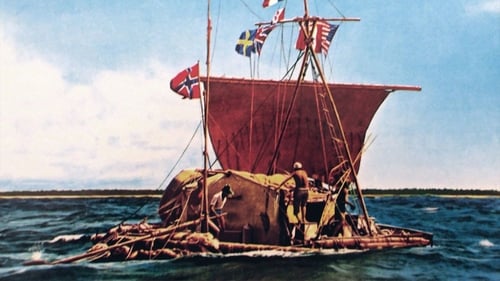Thor Heyerdahl
Birth : 1914-10-06, Larvik, Norway
Death : 2002-04-18

Director
In 1977, Thor Heyerdahl built a reed boat, the Tigris (the name for the Tiger in Latin), whose task was to demonstrate that trade and migration contacts could exist between Mesopotamia and Indian civilization as represented by modern Pakistan. The Tigris was built in Iraq and set sail with an international crew of 11 on board across the Persian Gulf to Pakistan, and from there to the Red Sea. After about five months of sailing, the Tigris, which retained its seaworthiness, was burned in Djibouti on April 3, 1978 in protest against the wars that erupted in the Red Sea and the Horn of Africa.

Himself
In 1977, Thor Heyerdahl built a reed boat, the Tigris (the name for the Tiger in Latin), whose task was to demonstrate that trade and migration contacts could exist between Mesopotamia and Indian civilization as represented by modern Pakistan. The Tigris was built in Iraq and set sail with an international crew of 11 on board across the Persian Gulf to Pakistan, and from there to the Red Sea. After about five months of sailing, the Tigris, which retained its seaworthiness, was burned in Djibouti on April 3, 1978 in protest against the wars that erupted in the Red Sea and the Horn of Africa.

Himself
Ra [also known as The Ra Expeditions] is a 1972 documentary film directed by Lennart Ehrenborg and Thor Heyerdahl about the expeditions organised by Thor Heyerdahl in 1969 and 1970 in attempt to cross the Atlantic on papyrus boats. It was nominated for an Academy Award for Best Documentary Feature.

Writer
Ra [also known as The Ra Expeditions] is a 1972 documentary film directed by Lennart Ehrenborg and Thor Heyerdahl about the expeditions organised by Thor Heyerdahl in 1969 and 1970 in attempt to cross the Atlantic on papyrus boats. It was nominated for an Academy Award for Best Documentary Feature.

Pirate (uncredited)
Pippi Longstocking, accompanied by friends Tommy and Annika, adventures on the South Seas to search for her father, who has been kidnapped by pirates.

Director
Documentary following the 1955–1956 Norwegian Archaeological Expedition's investigations of Polynesian history and culture at Easter Island.

Writer
Did the Peruvians cross the sea? The filming of a Norwegian archaeological expedition to the Galapagos islands in 1952, lead by Thor Heyerdahl. A continuation of the Kon-Tiki expedition.

Director
Did the Peruvians cross the sea? The filming of a Norwegian archaeological expedition to the Galapagos islands in 1952, lead by Thor Heyerdahl. A continuation of the Kon-Tiki expedition.

Himself
"Kon-Tiki" was the name of a wooden raft used by six Scandinavian scientists, led by Thor Heyerdahl, to make a 101-day journey from South America to the Polynesian Islands. The purpose of the expedition was to prove Heyerdal's theory that the Polynesian Islands were populated from the east- specifically Peru- rather than from the west (Asia) as had been the theory for hundreds of years. Heyerdahl made a study of the winds and tides in the Pacific, and by simulating conditions as closely as possible to those he theorized the Peruvians encountered, set out on the voyage.

Director
"Kon-Tiki" was the name of a wooden raft used by six Scandinavian scientists, led by Thor Heyerdahl, to make a 101-day journey from South America to the Polynesian Islands. The purpose of the expedition was to prove Heyerdal's theory that the Polynesian Islands were populated from the east- specifically Peru- rather than from the west (Asia) as had been the theory for hundreds of years. Heyerdahl made a study of the winds and tides in the Pacific, and by simulating conditions as closely as possible to those he theorized the Peruvians encountered, set out on the voyage.

Writer
"Kon-Tiki" was the name of a wooden raft used by six Scandinavian scientists, led by Thor Heyerdahl, to make a 101-day journey from South America to the Polynesian Islands. The purpose of the expedition was to prove Heyerdal's theory that the Polynesian Islands were populated from the east- specifically Peru- rather than from the west (Asia) as had been the theory for hundreds of years. Heyerdahl made a study of the winds and tides in the Pacific, and by simulating conditions as closely as possible to those he theorized the Peruvians encountered, set out on the voyage.










